4 Reasons Why Bad Pruning Hurts Trees and Us
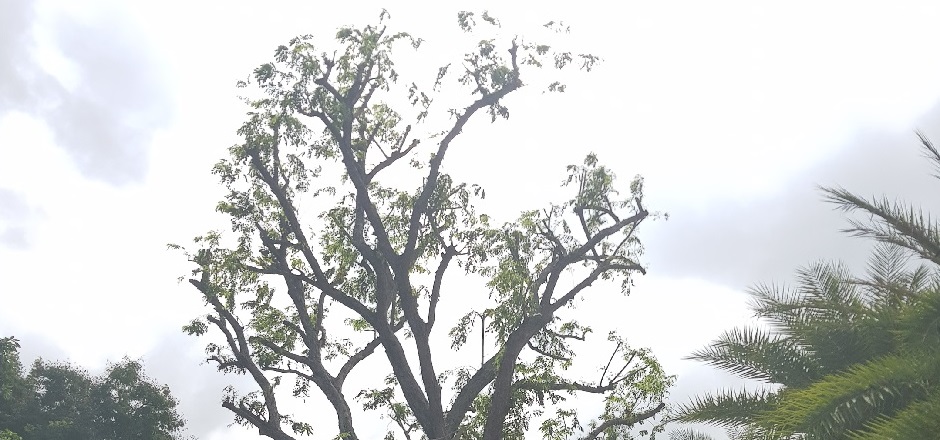
You may see workers removing most of the leaves on a tree here in Singapore, and leaving ugly bare stubs. This form of pruning is called topping, and we have discussed some of the reasons why this happens.
In this post, we would like to share with you why it is bad, both for the tree and for people.
But wait, we hear you ask. Drawing an imaginary line around the shape of what you would like the tree to look like, and pruning along that line is surely the right way to do it? After all, we trim bushes and hedges in the same way, and trees are plants too.
Source: Shiawasae Home
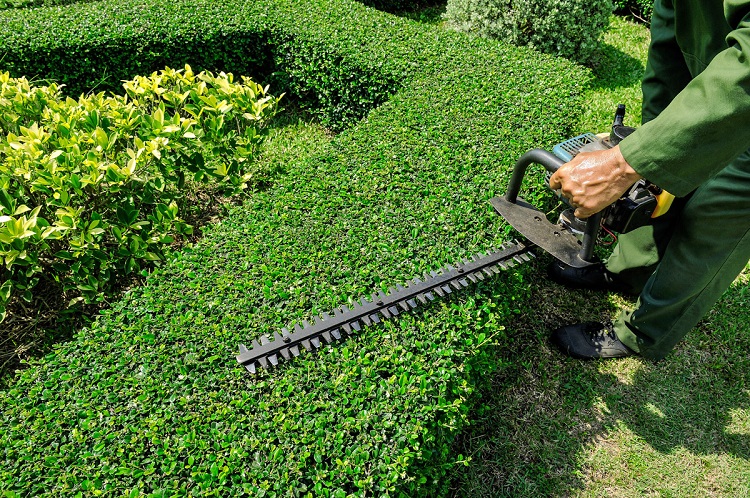
Not the right way to prune a tree.
Well, trees are not bushes, and each species has a natural shape. After all, why select a raintree or angsana for its large, spreading crown, if you are going to prune it into a bare stick.
It is possible to shape a tree into other forms by bending green branches, and keeping them in position until they turn woody (the fancy word here is lignify). But to force a tree to take another shape by pruning it like a hedge is ultimately harmful to the tree and to us.
Source: Epic Gardening
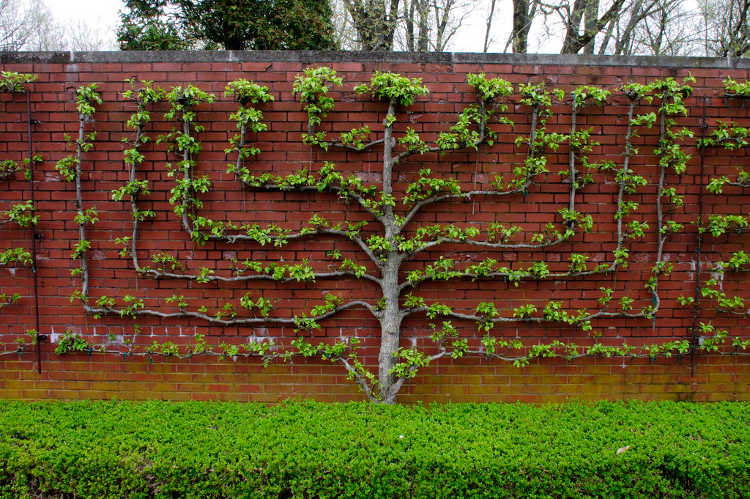
Shaping a tree’s shape as it grows. This technique is called espalier, to aid easy fruit harvest.
Humans need trees to be pruned for safety and aesthetics, while a tree needs pruning like a fish needs a bicycle.
Other than the obvious, “it is ugly, and defeats the purpose of having a tree for shade”, here are 4 reasons why topping is bad.
1. It will eventually kill the tree.
Think of the tree as an energy store. Its leaves produce energy in the form of sugars through photosynthesis, which the tree uses for growth and fighting off pests or pathogens.
Source: Quora
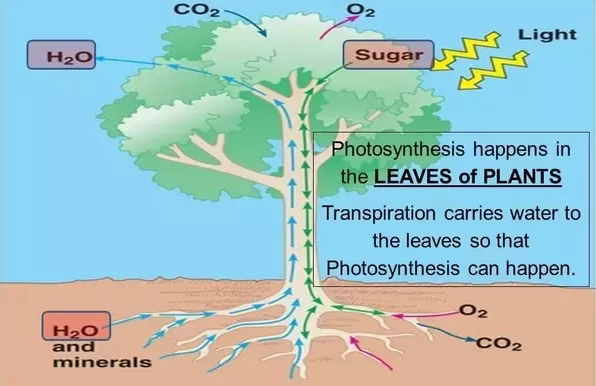
Leaves making that sweet, sweet sugar.
We wound a tree when we prune it. By removing all the leaves, we force a tree to spend precious energy regrowing all of it. While at the same time, denying it the ability to produce more energy to defend against the wounds we have inflicted.
If we repeatedly top a tree, eventually we can see each regrowth produce less, and smaller leaves, as the energy stores are drained. The process may take years, or decades, but the tree will eventually die from such abuse.
2. It generates hazards in the future.
When a tree is topped, one of two things may happen.
One, the tree considers the bare branch a waste of resources, and discards it. This creates a dead stub, ready to fall onto anything below, be it a building, vehicle, or pedestrian.
Source: CSK Landscape Services
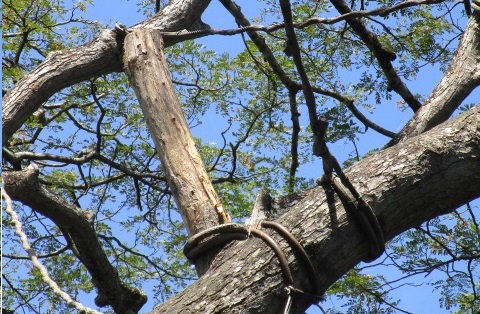
Ready your heads, here I come!
Two, the tree replaces the lost foliage with new leaves. These leaves take the form of densely packed new shoots, which eventually lignify (there’s that fancy word again. It means to turn woody.) and start to increase in girth.
Source: NParks
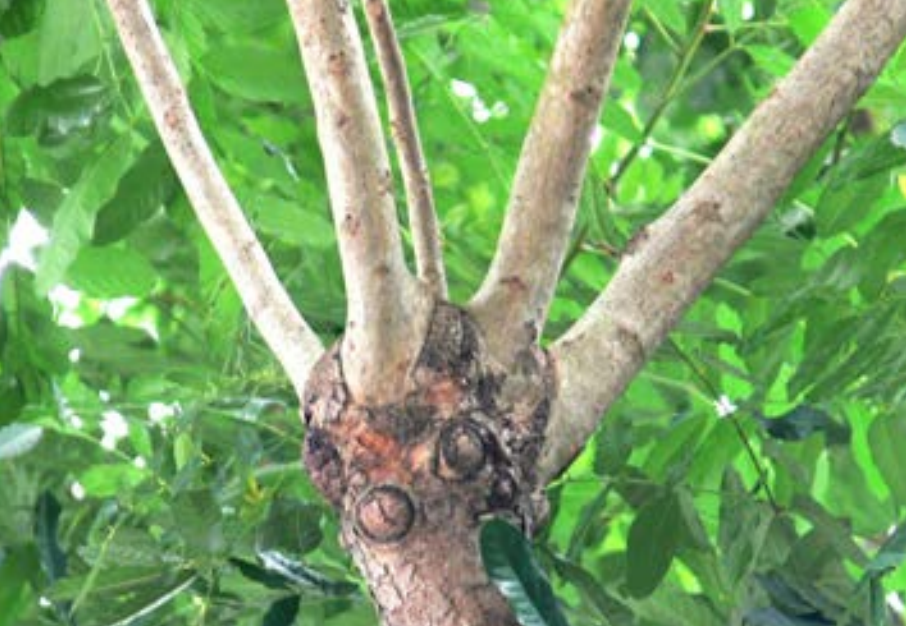
We look fine now, but wait till we get bigger.
Since these new shoots did not grow at the same time as the parent branch, they are not attached as strongly to the tree. As they grow thicker and heavier, they push against each other causing some of them to fail and fall.
3. It allows decay entry.
If we are cut, our bodies will heal it over time if we are healthy. Trees are slightly different. Instead of healing, they compartmentalize wounds with special zones designed for defense. This prevents decay from invading healthy sections.
One important defense zone is the branch collar. In some tree species, you may see a bulge where a smaller branch meets a larger one. That is the branch collar. In other species, they may be less obvious, but they are there.
Source: Medium
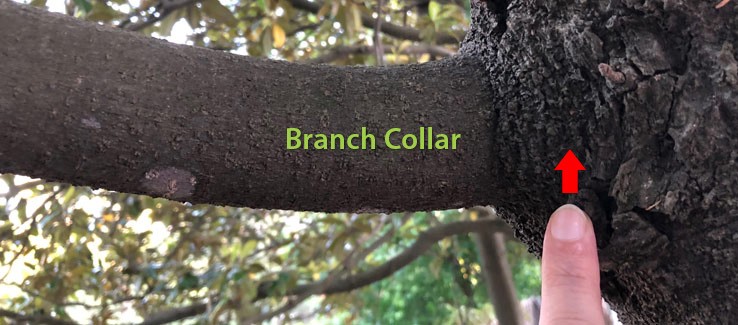
There it is!
By reducing branches to random stubs, this important defense zone is completely ignored and decay is allowed easy access.
Source: NParks
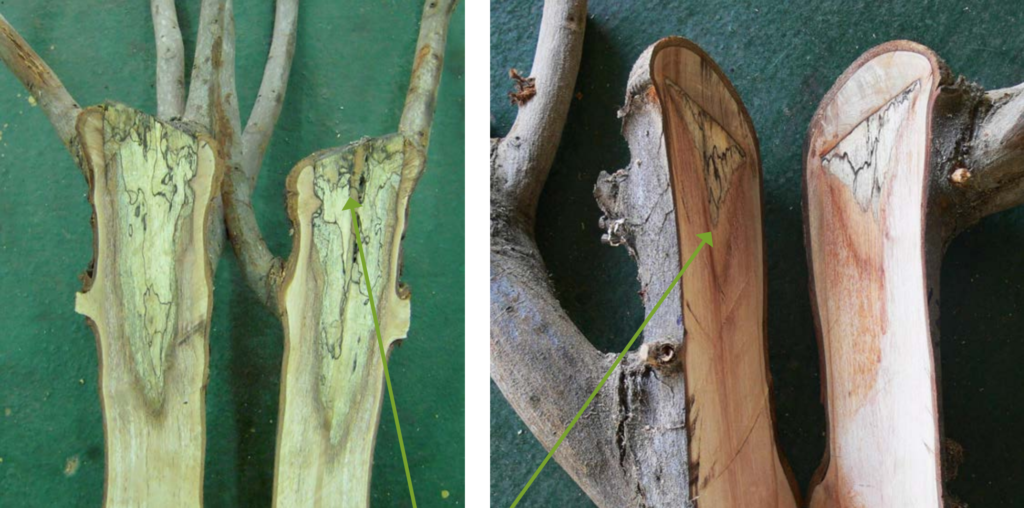
Green arrows point at discoloured regions, where decay has invaded these random stubs.
4. It increases costs.
Because of the reasons stated above, more time and effort is needed to fix the hazards that appear. Suddenly, a tree that only needed maintenance once every two years to be safe, now requires maintenance every six months.
The tree will also need to be removed when it dies before it reaches its typical useful lifespan.
So, what is the correct way to prune a tree?
The right answer is, it depends on the tree. But without getting into the details, here are 2 general rules that you, as a member of the public, can use to tell if the tree workers are doing a good job.
1. No more than 30% of a tree’s existing foliage is removed.
Remember how trees need leaves to photosynthesize? This ensures that trees have enough leaves to continue generating energy and deal with the wounds we have just inflicted on it.
2. Branches are being pruned to the nearest union.
This is where the branch collar is located. By reducing branches to this place instead of a random stub, we help the tree compartmentalize the wound by placing it just outside the defense zone.
Ultimately, it is up to us to keep Singapore’s Garden City (or was it City in a Garden now?) reputation. Now you too are able to tell if the tree work in your neighbourhood is harming or helping the people and trees.
